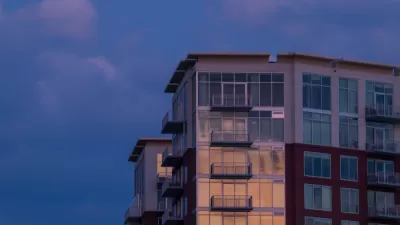Community resistance may explain why smaller apartment buildings are hard to build.

Every so often, I read something like this: "The only reason people wanted to downzone their neighborhood was because they didn't want 100-story skyscrapers" or "most people can tolerate density as long as you reason with them and don't build too much." The basic theory underlying these kind of statements is: anti-development activists aren't opposed to development, they are just opposed to humongous development, and if we just build duplexes and small apartment buildings (or, as new urbanists like to say, the "missing middle" between detached houses and large apartment buildings) they will not be controversial.
But this theory does not always correspond with reality. For example, yesterday I had a conversation with a local lawyer who was outraged that someone had turned a house in her neighborhood into a duplex. The homeowner had not built a 100-story skyscraper, or even a 10-story apartment building. They had just added one housing unit—but to my acquaintance, one was too many. Why? In this intown neighborhood, homeowners park on the street. And to my acquaintance, one new resident meant one new parking space, which in turn means that someone might lose their God-given right to park in front of the house.
Thus, homeowners' desire to park their cars on public streets means that even one new unit of housing may be met with community outrage. In other words, even the tiniest bit of housing development will be controversial.* (Although this story involves just one incident, I have read plenty of other stories about neighbors opposing small apartment buildings and rowhouses.)
Neighborhood concerns about parking may be one reason why the "missing middle" has become more rare in recent decades. Someone who builds a 20-story high-rise might, if government demands it, find a way to add parking, and to pass the costs on to tenants or condo-buyers. But someone who adds a unit to their house (or even a small apartment building) might not be able to add parking so easily. Thus, in urban areas parking may actually be more of an obstacle to “missing middle” housing than to high-rises.
Moreover, a large developer has more ability to negotiate than someone building a four-plex or an accessory unit. If I want to build a 35-story high-rise, and my neighbors object to it, I might be able to shave a few stories off the building and still make a profit. By contrast, if I am turning my house into a duplex, I don't have much room to negotiate: either I build an extra unit or nothing at all.
So paradoxically, the current zoning system of "rule by neighbors" may be designed to prevent a city of skyscrapers—but by making approval of small buildings difficult, the system actually may shift investment capital into larger buildings.
Is this a problem? If you worry about affordable housing, probably yes, since even small buildings add to the housing supply. If you favor a "human-scale city" combining walkable neighborhoods and small buildings, probably yes, because the status quo prevents new small buildings from being built.
On the other hand, if you believe housing for current residents' cars is more important than additional housing for people, or if you just like your cities dominated by tall buildings and detached single-family homes, the status quo is perfectly fine.
So what's the alternative? If you want to bring back the "missing middle" the logical solution is to treat duplexes and small apartment buildings like single-family homes—that is, to make them an as-of-right use wherever a single-family house is an as-of-right use.**
*According to my acquaintance, the unit was approved by the city only because the homeowner had misled the government into thinking that the unit would be used for a music studio. So because of parking, housing is now more controversial than music.
**For a more detailed discussion of how to use form-based codes to allow "missing middle" housing, go here.

Alabama: Trump Terminates Settlements for Black Communities Harmed By Raw Sewage
Trump deemed the landmark civil rights agreement “illegal DEI and environmental justice policy.”

Study: Maui’s Plan to Convert Vacation Rentals to Long-Term Housing Could Cause Nearly $1 Billion Economic Loss
The plan would reduce visitor accommodation by 25% resulting in 1,900 jobs lost.

Planetizen Federal Action Tracker
A weekly monitor of how Trump’s orders and actions are impacting planners and planning in America.

Wind Energy on the Rise Despite Federal Policy Reversal
The Trump administration is revoking federal support for renewable energy, but demand for new projects continues unabated.

Passengers Flock to Caltrain After Electrification
The new electric trains are running faster and more reliably, leading to strong ridership growth on the Bay Area rail system.

Texas Churches Rally Behind ‘Yes in God’s Back Yard’ Legislation
Religious leaders want the state to reduce zoning regulations to streamline leasing church-owned land to housing developers.
Urban Design for Planners 1: Software Tools
This six-course series explores essential urban design concepts using open source software and equips planners with the tools they need to participate fully in the urban design process.
Planning for Universal Design
Learn the tools for implementing Universal Design in planning regulations.
Caltrans
Smith Gee Studio
Institute for Housing and Urban Development Studies (IHS)
City of Grandview
Harvard GSD Executive Education
Toledo-Lucas County Plan Commissions
Salt Lake City
NYU Wagner Graduate School of Public Service






























